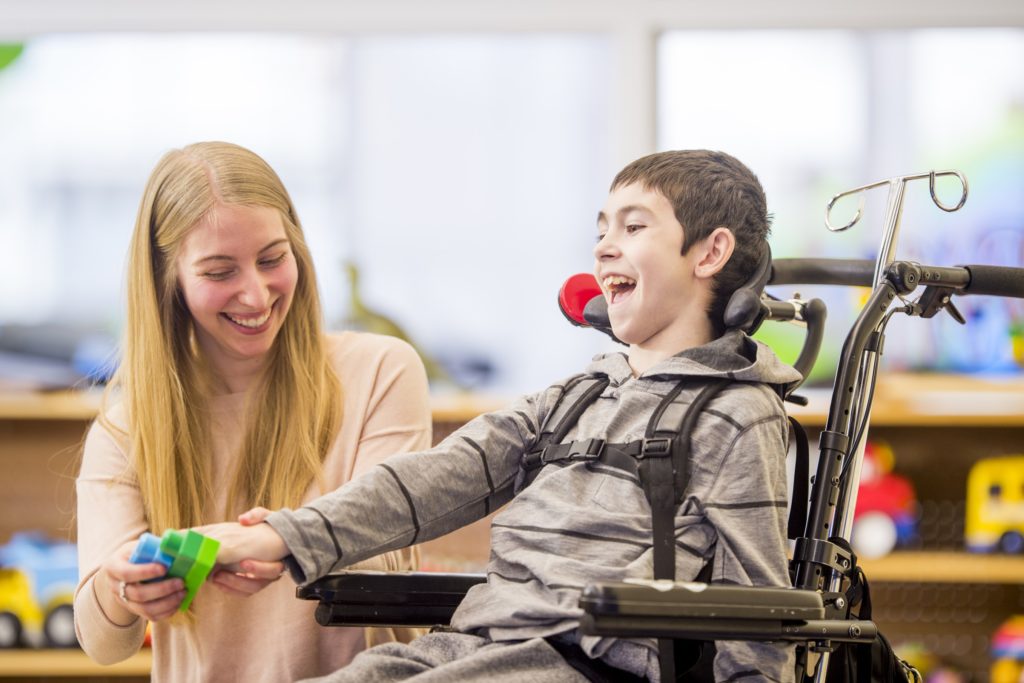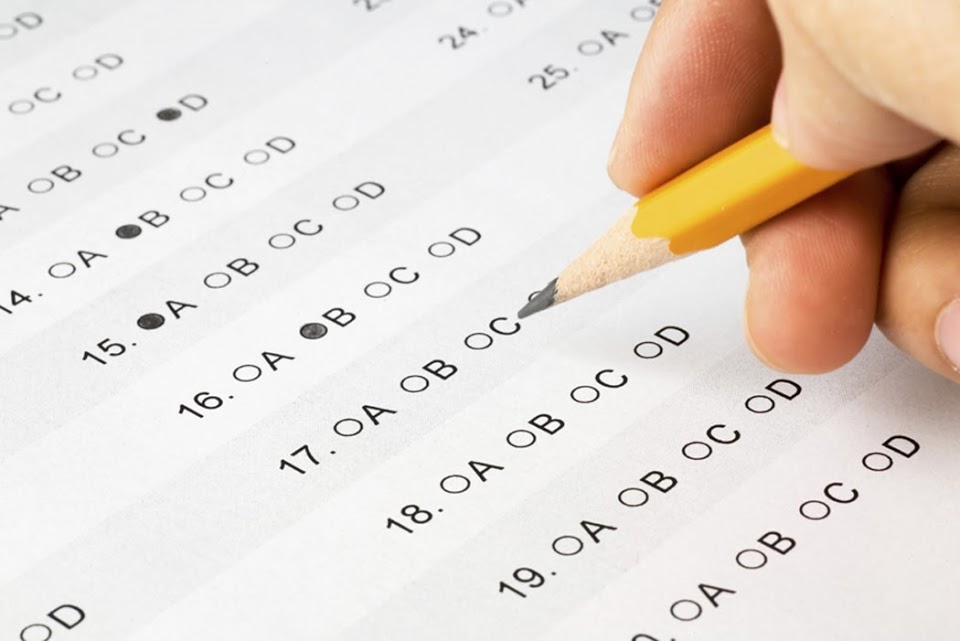
Students rely on an array of services in special education classes.
Christopher Futcher/iStock
Top Takeaways
- A proposal for the U.S. Department of Health and Human Services to oversee special education draws criticism.
- Trump has promised stable levels of funding for special education, but critics worry about his plan to reduce oversight of those funds.
- Advocates worry that a “brain drain” from the U.S. Department of Education could weaken the quality of education for students with disabilities nationally.
Javier Arroyo has been impressed with the education his 9-year-old son with a disability receives.
“This country provides so many resources,” said Arroyo, whose son attends Kern County’s Richland School District.
Arroyo’s wife has family in Mexico, but he believes his son, who has Down syndrome, is better served here than he’d be in most other countries because of the services he receives: “We don’t have resources like this in Mexico.”
But because of changes happening at the federal level, he said, it’s hard to tell what education will look like for his son.
Arroyo has heard that federal cuts are already affecting disabled students and that President Donald Trump has proposed moving oversight of special education from the U.S. Department of Education to the Department of Health and Human Services. Local school leaders have told him that they also don’t have much clarity about how special education is likely to change.
“It’s confusing right now, what’s going on federally,” Arroyo said. “Not even experts really know.”
Arroyo isn’t alone. There are 850,000 students with disabilities in California. These students, their parents and educators in California say they have a lot of questions — and serious concerns — about federal proposals that could transform the way schools deliver education to students with disabilities.
Saran Tugsjargal, 18, is a high school senior and one of the first students to sit on the state’s Advisory Council for Special Education. She said her own initial response to moving special education outside the U.S. Department of Education was confusion: “I was like, ‘What the flip?’”
Tugsjargal attends Alameda Community Learning Center, a charter school in the Bay Area, and she often hears from students like her who have disabilities. Many have told her they are confused and fearful about how the proposed federal changes could affect their education.
“A lot of my peers at my school were very scared. They were terrified,” she said. “They were just like, ‘What’s going to happen to me? What’s going to happen to my parents, who need to fight for those accommodation services? What’s going to happen to a lot of us?’ There’s a lot of fear.”
Education for students with disabilities has historically received broad support across party lines. The federal government provides approximately 8% of special education funding. That’s a critical amount, though it falls well short of the original 1975 Individuals with Disabilities Education Act (IDEA) promise that the federal government would pay 40% of special education funding.
Because of that bipartisan support, most experts believe that federal funding for special education isn’t at serious risk right now. However, they say that other changes proposed by this administration could adversely impact students with disabilities.
Reg Leichty, the founder of Foresight Law + Policy, an education law firm in Washington, is one of those experts.
“I said often the last few weeks, ‘Don’t over or underreact,’” Leichty said. “But we have a job to do making sure that the system continues to work for kids.”
In his budget, Trump proposes keeping federal funding for special education at current levels — $15.5 billion nationally — while consolidating funding streams, which would reduce oversight and give more control to local governance.
His proposal to dismantle the Department of Education requires moving oversight of special education to the U.S. Department of Health and Human Services, which previously oversaw the education of students with disabilities.
“IDEA funding for our children with disabilities and special needs was in place before there was a Department of Education, and it managed to work incredibly well,” U.S. Education Secretary Linda McMahon told a Fox News host.
In an April 4 letter to the California congressional delegation, California administrators of Special Education Local Plan Areas, or SELPAs, vehemently disagreed, stating that the proposal undermines the rights of students with disabilities and jeopardizes key funding and resources for these students.
Scott Turner, chair of SELPA Administrators of California, wrote that moving oversight of the education of students with disabilities to a health department “reinforces an outdated and ableist, deficit-based model where disabilities are considered as medical conditions to be managed rather than recognizing that students with disabilities are capable learners, each with unique strengths and educational potential.”
Including students with disabilities in the general education classroom to the maximum extent possible is the model that the Department of Education has aimed at over the decades.
Before the passage of the IDEA, students with disabilities were routinely institutionalized or undereducated, if they were offered a public education at all, according to Robyn Linscott, director of education and family policy for The Arc, a national advocacy group for people with intellectual and developmental disabilities.
Moving special education to a health agency “promotes this medical model and continues the othering of students with a disability,” Linscott said.
Arroyo wants to see his 9-year-old included in more general education classes, such as physical education, and activities like field trips. High staffing ratios make this kind of inclusion possible, ensuring the quality of his son’s education. His son is in a class with nine students, three aides and one teacher. He worries federal cuts could have major consequences for his son and others in his class.
“I couldn’t imagine if (the teacher) even lost one aide,” Arroyo said.
The Coalition for Adequate Funding for Special Education has come out in support of a federal bill that would keep the U.S. Department of Education intact and free from any restructuring, according to the organization’s chair, Anthony Rebelo.
“We want to make sure that folks understand students with disabilities are still students, that they don’t just get lumped with disabled people,” said Rebelo, who is also the director of the Trinity County Special Education Local Plan Area.
Joshua Salas, a special education coordinator at a charter school, Alliance Renee and Meyer Luskin Academy in Los Angeles, worries that the quality of education for students with disabilities will be “put on the back burner” and that there won’t be enough federal oversight to make sure schools are serving students with disabilities.
“What I’m worried about are the long-term implications,” said Salas. “I’m wondering about what will get lost in the transition.”
Education attorney Leichty said it’s hard to know what education for students with disabilities would look like under a new department, but he worries about the “brain drain” of experts from the Department of Education who view education as a civil right.
“Over time, could it be made to work? Certainly,” Leichty said. “But I think there’s a major loss of institutional knowledge and expertise when you try to pursue a change like this.”
He said Trump’s executive order to close the Department of Education acknowledges that the Constitution limits the ability of the executive branch to do so without congressional approval.
The federal Department of Education and other federal offices, including the Department of Health and Human Services, have already experienced wide-scale cuts proposed by the “Department of Government Efficiency.”
The Office for Civil Rights (OCR) lost half of its staff, including shuttering the San Francisco-based office dedicated to California complaints, which had over 700 pending cases, more than half involving disability rights. A spokesperson for the administration said that it will use mediation and expedited case processing to address disability-related complaints. Those cuts have been challenged in court.
Advocates are concerned that doubling the caseload for existing staff means there will be a federal backlog of complaints, weakening enforcement.
Student advocate Tugsjargal has been telling students with disabilities and their parents to call their legislators and attend town hall meetings and public rallies to protest Trump’s proposals.
“When we talk with each other about our stories, when we speak out, we learn a lot from each other,” she said. “We drive a lot of change.”





